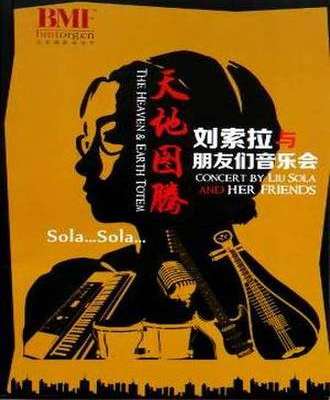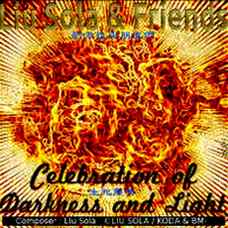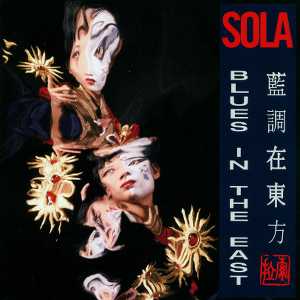


Première of the concert "China Beat" on 2015-10-19 at "Beijing Int'l Music Festival"

>The form of traditional Chinese percussion music has many similarities with African percussion music forms. These similarities explain why traditional Chinese percussion music still continues to use ancient tribal cultural forms. The more people are involved in a percussion performance, the more sound energy can be produced. This special music language can make the connection between the universe and living beings more direct and palpable. These traditional rhythms have been loved by the public historically, but how to make today’s young pop music lovers pay attention to the tradition? I hope that through my new percussion composition concert, and our ensemble 's unique performance style, these traditional Chinese rhythms can attract the ears of today’s young people in a new fashion.

The hall was packed and the atmosphere was ceremonial. An absolute silence reigned during the performances. Loud applause followed. The finale was magic ...the hall claiming 'encore' after 'encore'. And the reviews are raving. Could not have been any better.
Liu Sola & Friends...playing at the 'Forbidden City Concert hall'
Beijing-January 3 2005.
"Composer Liu Sola is dedicated to reviving ancient Chinese sounds through her contemporary,
avant-garde approach."
China Daily


"Liu Sola and Friends Ensemble" at Pace Square. 798. Beijing 2012).
The album is available for download from hundreds of webstores
around the world:
itunesgoogle playamazonemusic
"The concert was so unusual and stirring. To see those young people playing such instruments with such zeal
... totally something I had never heard. The human voice in a realm unknown to me. Brava"
Francis Ford Coppola (Film director)
"Sola is like a singing shaman. The concert has a kind of tribal atmosphere, Sola wearing a black robe,
like a shaman's floating appearance, she began to speak, became the master of ceremonies, the director,
the commentor, the soloist. This role was her true nature. Each piece structures and transforms the experiments
of human voice, pipa and drum sound. In such breathing in and out, calls and cries, sound absorption experiments,
as the earthly tradition reborned, sublimated into a simple timeless floating in the air"
Danny Yung (Theater Director)

"This production is the brainchild of Liu Sola. The show
offers an eclectic blend of musical style - ancient Chinese
zither melodies give way to tango; Beijing opera is paired
with expressionist declamation. But this is no "east meet
west" gimmick. Allusions to the various styles made dramatic
sense, revealing character or dictating the action on stage.
The overall structures were surprisingly tight and formal.
Her performance was both emotionally intense and superbly
controlled over a wide vocal range."
by MAK SU-YIN in "The South China Morning Post". 13/08/2009
"In her chamber opera 'Fantasy of the Red Queen', the impressively gifted writer, composer, performer
and vocal artist Liu Sola has abstracted from her story, distilling it
into a myth: the myth of the woman
who wins power with the
help of powerful men. In six scenes, with a stylized
constellation of personae and a broadly eclectics musical
setting, traditional figurative forms of Chinese musical
theatre combine with modern psychology, traditional and
contemporary musical idioms with elements of pop. Liu Sola
has captured the story in a surprisingly clear, intense
formal language: a national narrative whose many levels of
meaning rise above regional limitations. Close cooperation
between the Ensemble Modern and an ensemble of Chinese
musicians and performers working under the name "Liu Sola
& Friends" has created a piece in which the music and
the musicians themselves shape the action on stage. The
dramatic climax in act five is the revolution, portrayed by
the musicians alone. In a striped down choreography, they
march across the stage while the percussion instruments
provide accompanying noise and structure. At present,
concepts of this kind can only be staged with Ensemble Modern."
Frankfurter Rundschau.
08/05/2006 (Translated from German)
" ... compositions of Liu Sola for voice, pipa and piano
achieve, in the more intimate atmosphere, the perfect
blending of styles. When Liu and her Soul sister dance about
on the stage, while the one vocally improvises Chinese, the
other, African elements, it is clear; such globalization
gives the West the cold shoulder."
in "Suddeutsche Zeitung".
2003 Germany

"... captivating; Liu Sola and Hillier managed well the
extremely difficult union of the Western avant-garde with
Eastern and early baroque styles. The work was most
impressive when its textures built into something
immaculate, something sublime."
by Stephen Graham in "Musical Criticism"
"Sola took the music of one tradition and emphasized the
differences within it. Sound rich and expressive. "
by Neil Strauss in "The New York Times" April 5, 1995.
"Their forceful interplay seemed to hit a wellspring of
indigenous music: part African, part Asian. Beyond language,
they found a primal connection grounded in the physicality
of the human voice."
by Ann Powers in the "New York Times". 1998
"The Queen of Chinese Jazz and Rock'n Roll"
Phoenix TV. Hong Kong.2002
" ... emotive, free-form vocalizing, with echoes of Chinese
operas, to simple folklike melodies; Ms. Sola could sound
childlike or baleful, tender or fierce."
by Jon Pareles in the "New York Times". 1996


" ...it's a potent genre brew sure to excite listeners whose
ears know no boundaries."
by Neil Strauss in the "New York Times" 1995
" ...takes music a step further in to the most unexplored and
occasionally exploited (Paul Simon) genre of them all: a
genre that has the potential to transcend the limitations of
classification, geography, culture and context. The coming
together of musical style and cultures - a kind of global
conceitedness."
in "Spotlight" 1994
"The only Chinese artist who'd qualify to play the New
Orleans Jazz Festival"
in "New York Press" 1995
"I feel Liu Sola, Like I feel Marvin Gaye and Bob Marley."
by Brendon Mueller in "Splatter Effect" 1994
